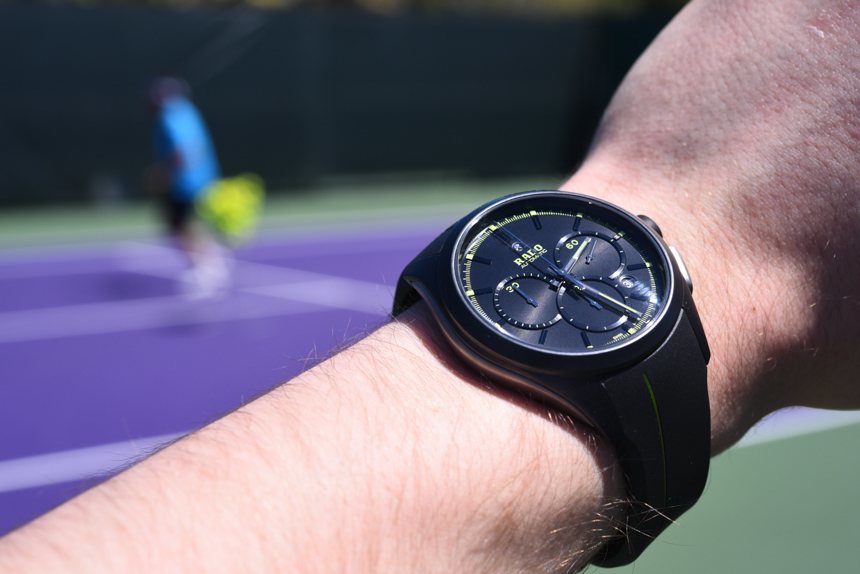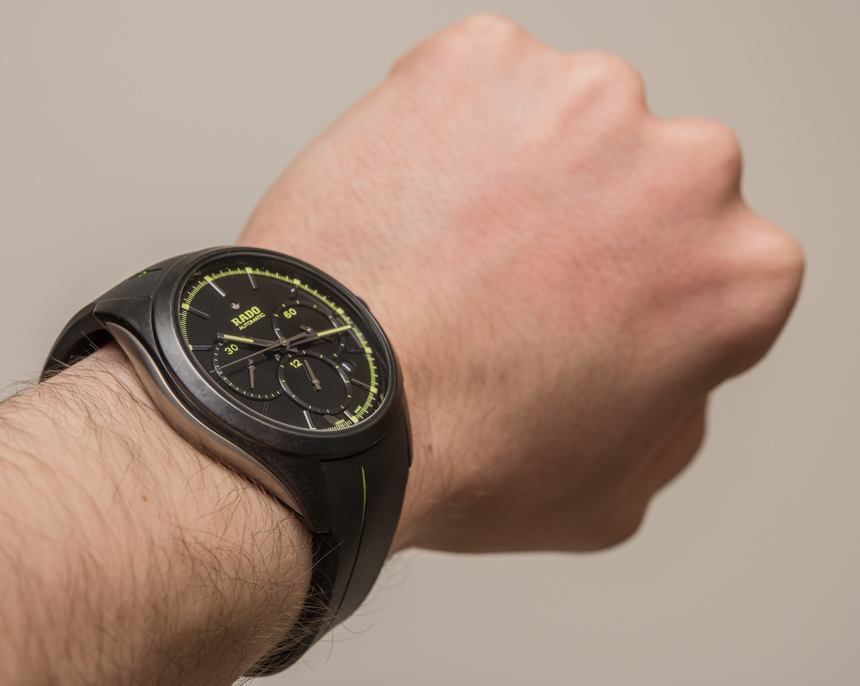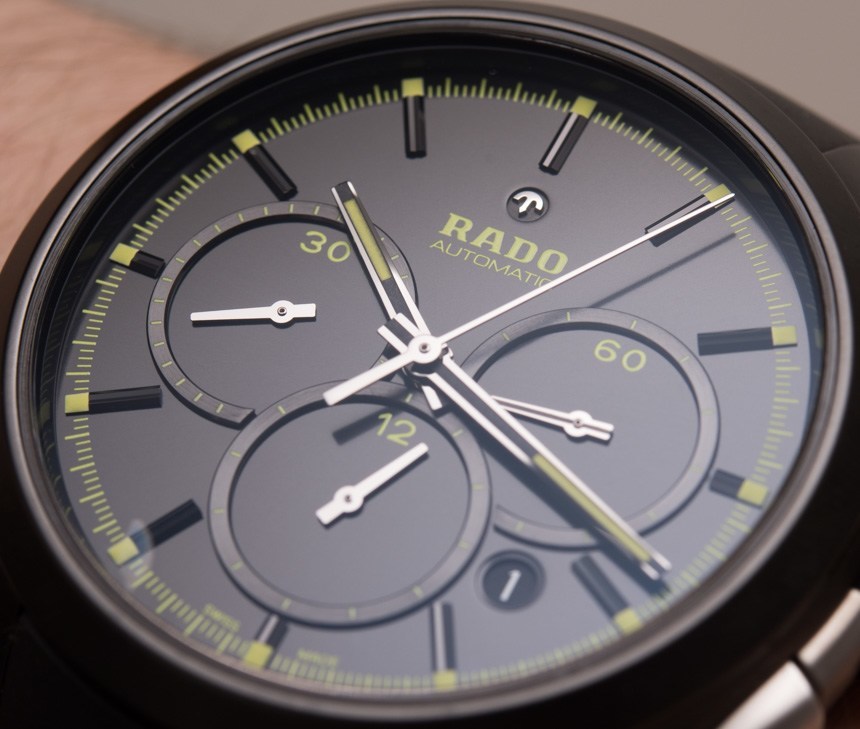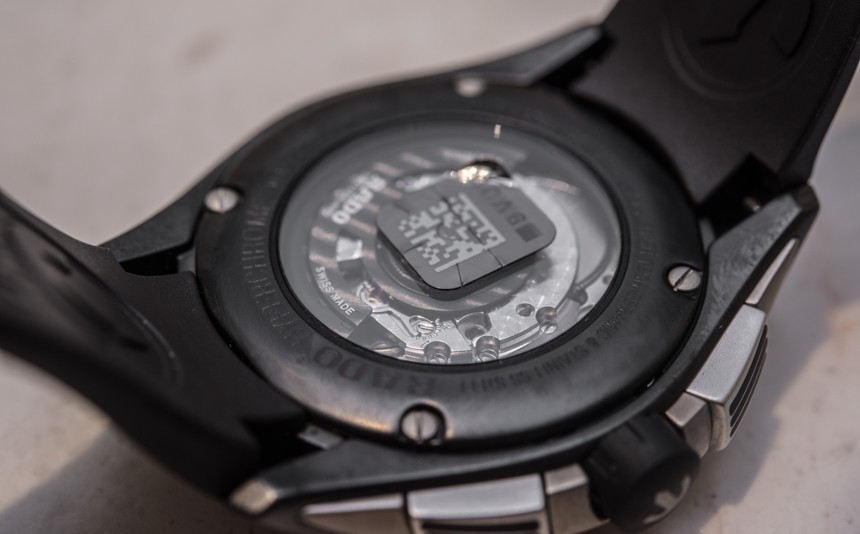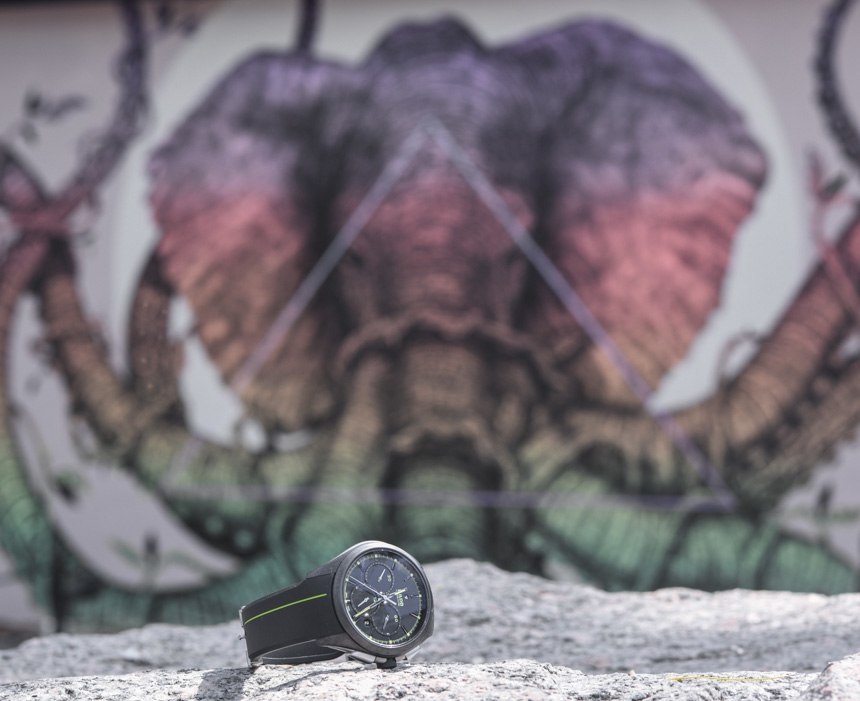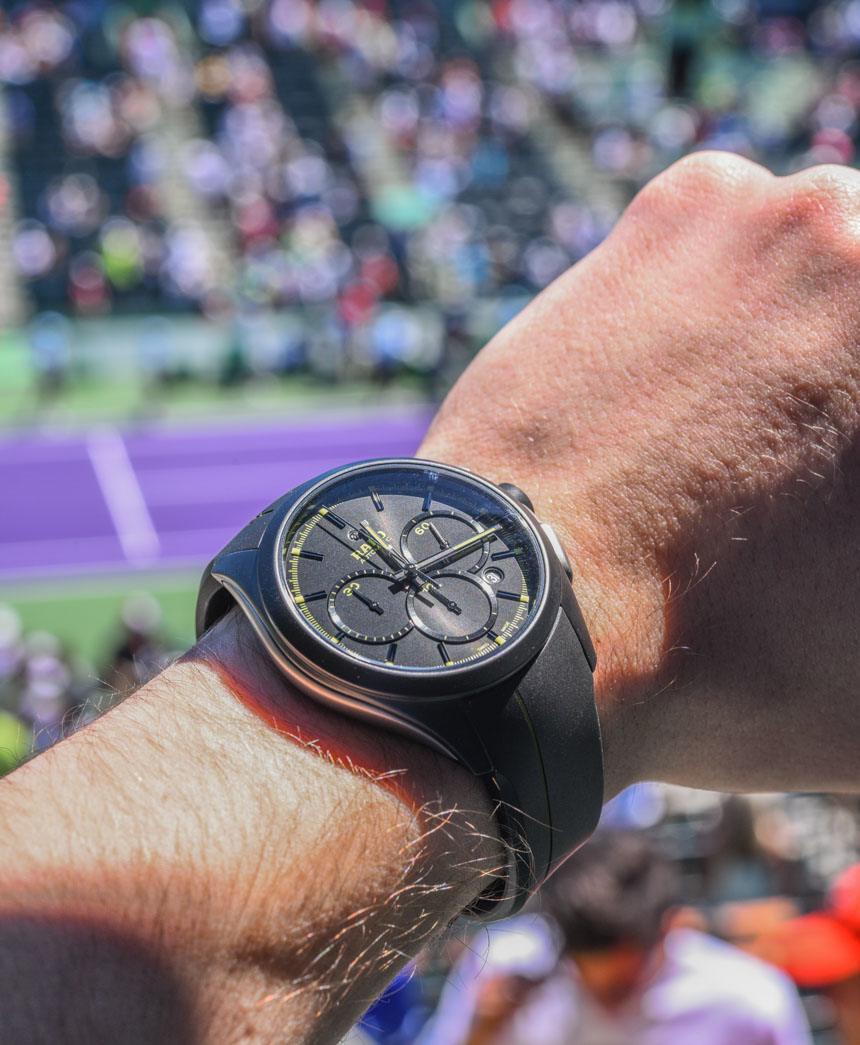
Just a few weeks ago, I was fortunate to join Rado
in Miami, Florida, visiting the Miami Open tennis event of which the Swiss brand is the Official Timekeeper. While there, I took the opportunity to wear for a few days one of their tennis-inspired sports watches, specifically from the Rado Hyperchrome XXL Court Collection. Since we are speaking of Rado, Hyperchrome of course refers to the use of one of the company’s ceramic materials. As the name suggests, the case to the naked eye appears to have been made out of some sort of weird metal – while, in fact, it is ceramic through and through.
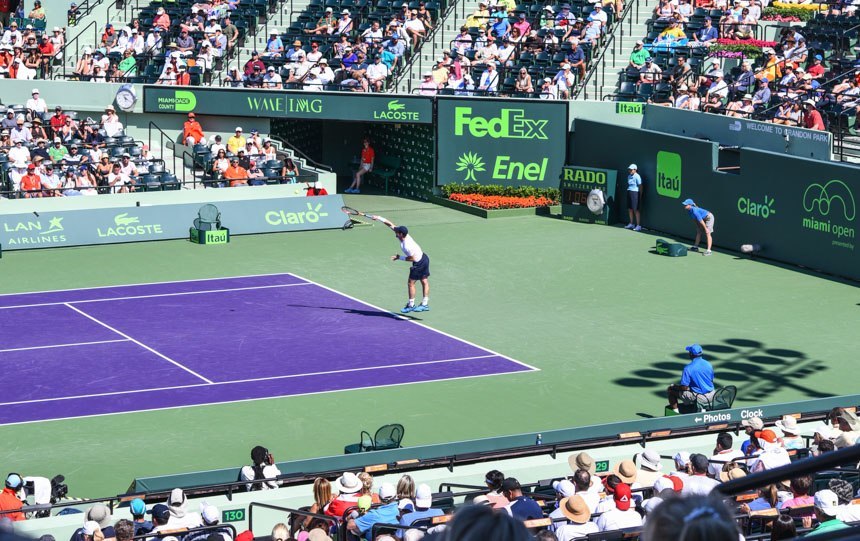
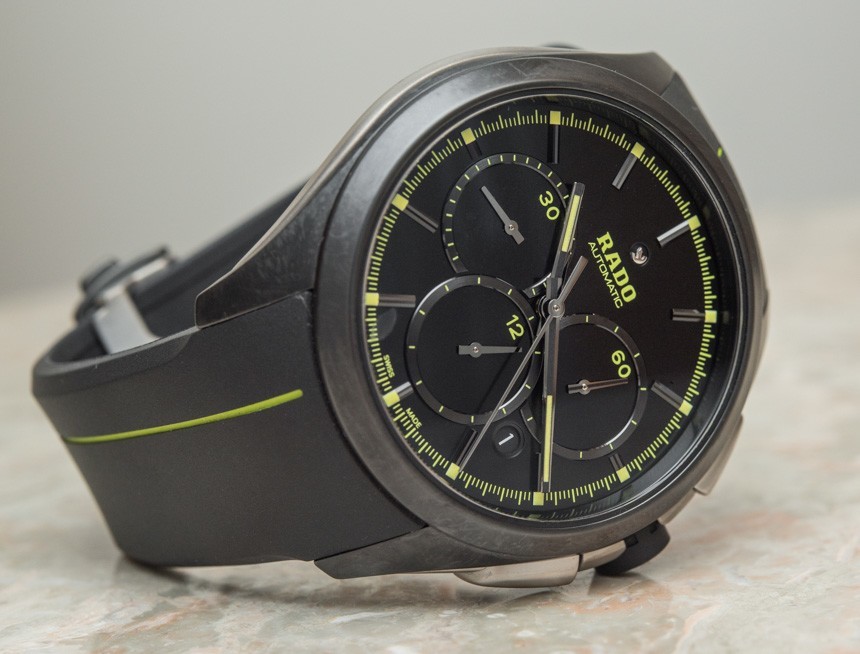
Before going into greater detail on this old-new material, let’s see how the Rado Hyperchrome XXL Court collection performs on and off the court. Altogether there are three variations in this line of watches, representing the three surfaces on which tennis is primarily played: hard court is mimicked by a rather vibrant blue version, clay by a piece with orange indices and hands, and the one seen here opts for neon green, representing grass. Incidentally, this very green is exactly the color of a tennis ball – at least it always reminded me of that and not of the green of grass.
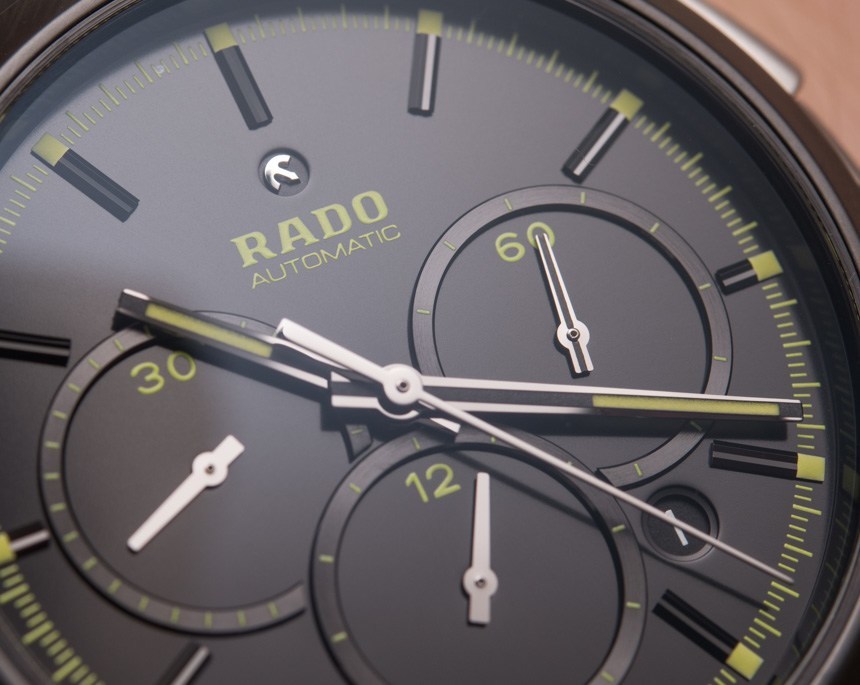
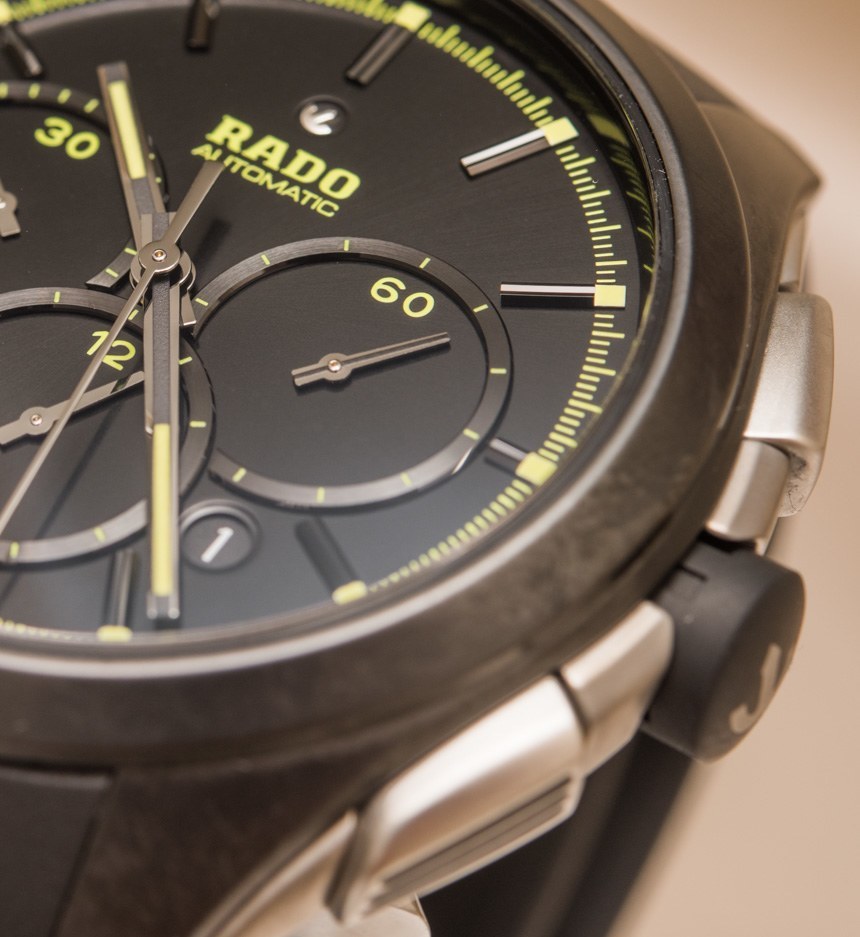
Given the price point – $4,300 on the rubber strap and $4,600 on the ceramic bracelet – one does expect high quality components all around. Despite the high-tech case, what first stood out for me was the sleek, glossy look of the dial, with only the indices and the peripheries of the subdials lending it some extra depth. Despite the relatively straightforward design, the dial has a number of different “looks” that I tried to capture with the two images above.
The first is a softer appearance where the flat surface of the dial and sub-dials, as well as the sub-dial circles seem to blend into one homogenous plane; whereas on the second shot you see these elements stand out more on their own, making for a more defined appearance. I could certainly appreciate this change of mood – the only visual shortcoming (to my eyes) were the decidedly flat sub-dial hands, which I felt could do with a bit more finesse.
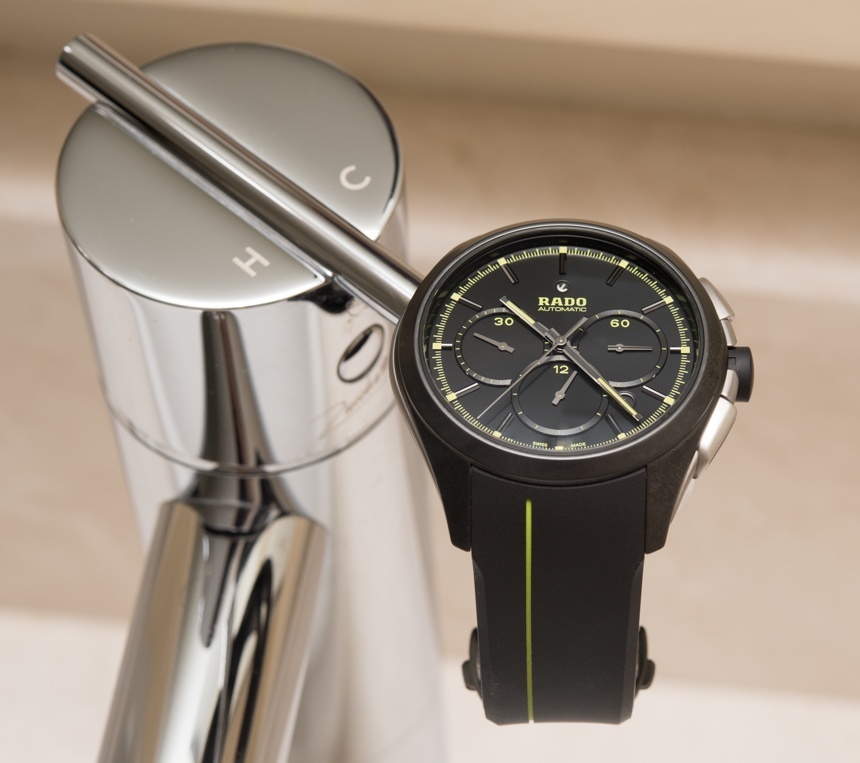
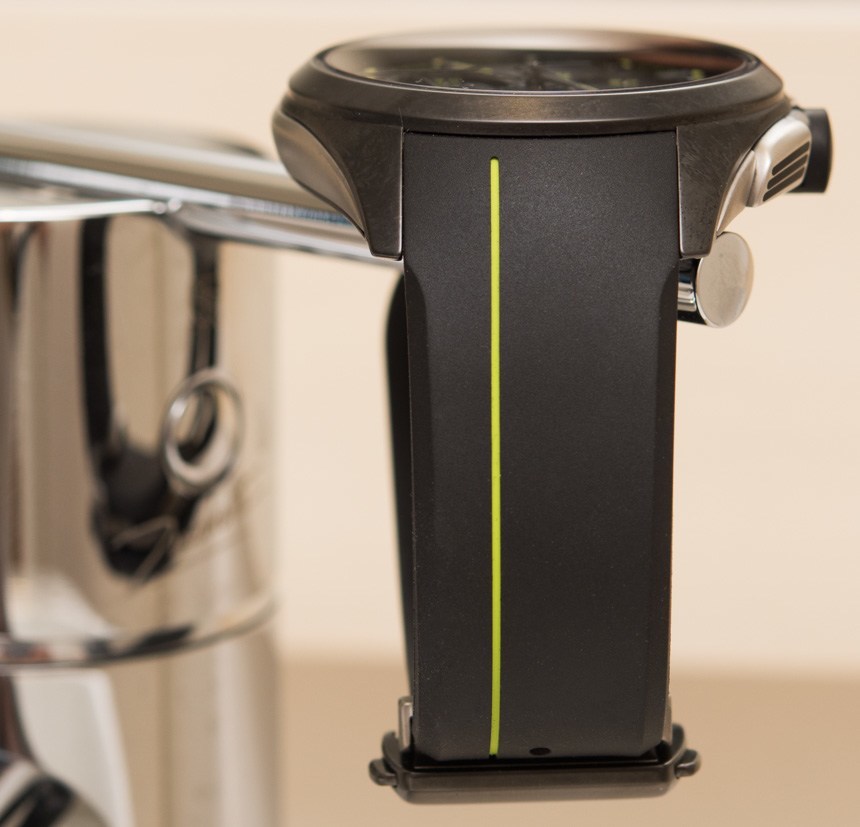 The overall design is all about integration: every single element works well both aesthetically and functionally with the one it is supposed to go with. The most obvious proof for that is the way Rado managed to integrate the rubber strap into the case, which is one of the very best I have encountered. Speaking of the rubber strap, it has a genuinely high-quality feel to it, a real joy to put on and wear for extended periods. Wearing it while doing sports in the humid and hot environment was not a problem, as it never stuck to my skin or pulled the hair on my wrist. More generally speaking, the watch highlights extremely consistent edges and curves: aesthetically, everything is where you would want it to be, no matter how you are looking at it.
The overall design is all about integration: every single element works well both aesthetically and functionally with the one it is supposed to go with. The most obvious proof for that is the way Rado managed to integrate the rubber strap into the case, which is one of the very best I have encountered. Speaking of the rubber strap, it has a genuinely high-quality feel to it, a real joy to put on and wear for extended periods. Wearing it while doing sports in the humid and hot environment was not a problem, as it never stuck to my skin or pulled the hair on my wrist. More generally speaking, the watch highlights extremely consistent edges and curves: aesthetically, everything is where you would want it to be, no matter how you are looking at it.
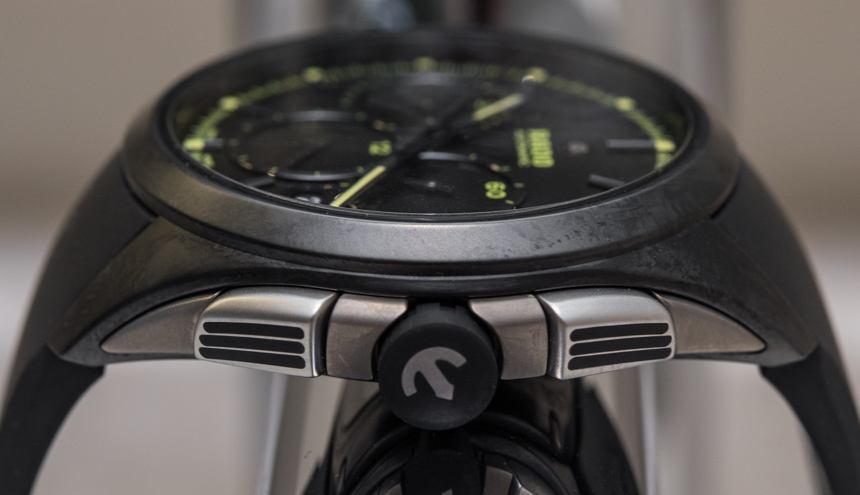
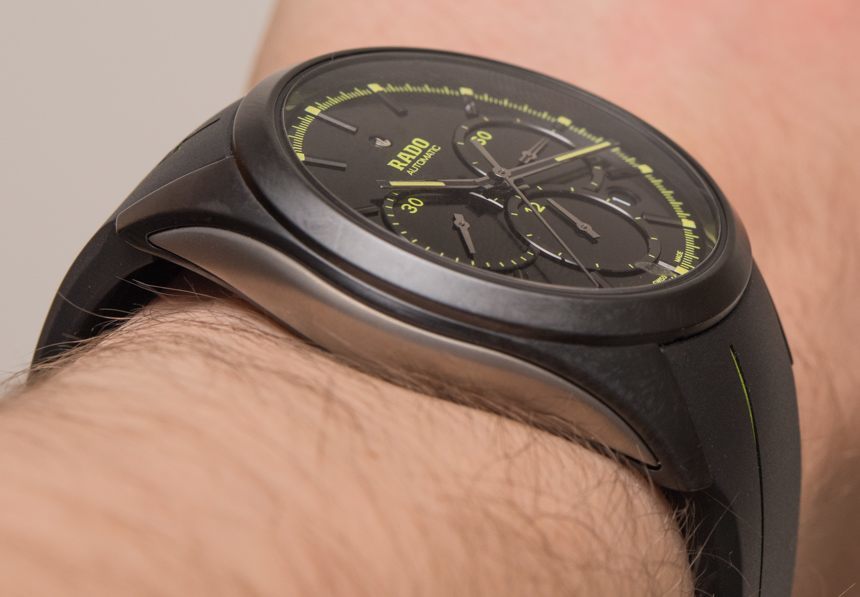
Carrying on with the excessively integrated design, we must mention the case itself. Wrapping up the Rado Hyperchrome XXL Court collection is Rado’s monobloc ceramic case construction, which means that the entire case – specifically the lugs, the center of the case and the bezel – are made of one piece of ceramic and there is no inner steel core; it is solid ceramic. Fitted to this case are stainless steel inserts, one on each side of the case. On the right hand side, this insert houses the rubberized crown with the Rado logo, as well as the chronograph pushers. While the look of these elongated, curvaceous steel inserts is of course highly subjective, and they arguably provide some welcome protection to bumps and shocks, I would love to see a version of the same case with a solid ceramic side and no inserts.
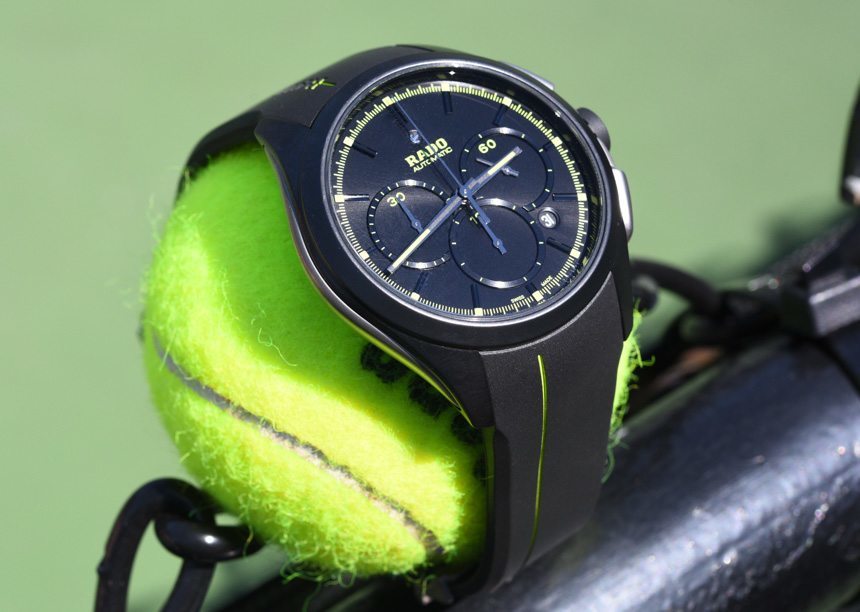
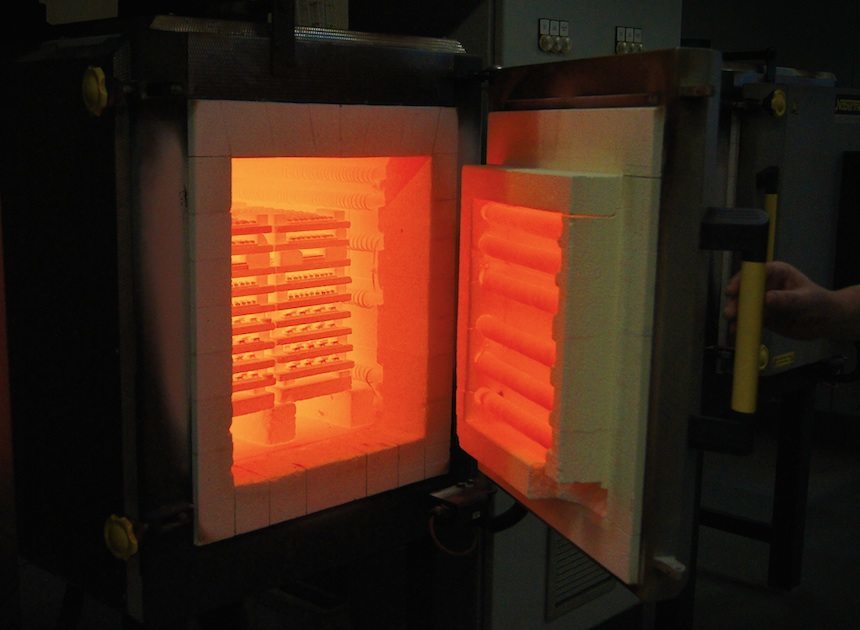
The material of the 45mm-wide case, as mentioned above, is referred to as Hyperchrome. Hyperchrome looks much more like an unusual metallic alloy than ceramic: depending on the lighting conditions, it can be seen as a matte, dark grey case, while on some more scarce occasions, it shows a metallic sheen. Hyperchrome also means “monobloc” construction, i.e., there is no inner steel core that is surrounded by ceramic – the case, in this instance, is ceramic all the way through. A liquid form of ceramic is injected into a mould that already contains all openings for the bracelet, side inserts, as well as the crown and pushers. In this mould, the injected zirconium oxide is subjected to extremely high pressure (1,000 bar), then cooled down and removed from the mould; only to be finally sintered at 1,450 degrees Celsius in a furnace (that you see above). This monobloc design is unique to Rado and has not yet been shared with other Swatch Group brands.
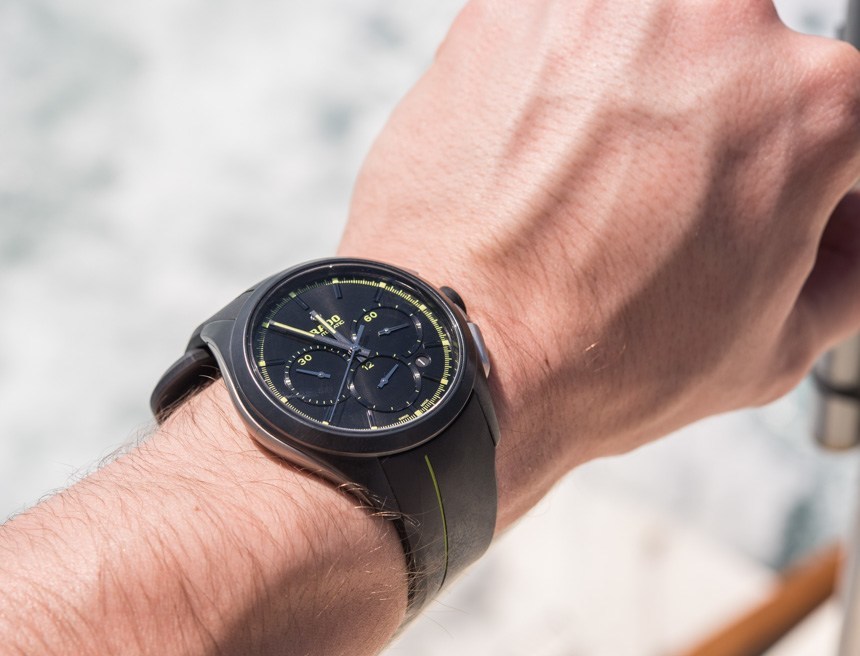
What is the point of all this effort? The result is a case that has a unique, somewhat metallic look to it but is nonetheless scratch resistant like any other kind of ceramic: it will look as good as new even years or decades of wear later. It is this advantage that makes the side inserts that little bit more redundant to me: while it arguably is the bezel and lugs of a watch that are subjected to most impacts (and their resulting scratches) and hence ceramic comes in handy there, I still would love to see an all-ceramic case in this collection – if that were technically possible.
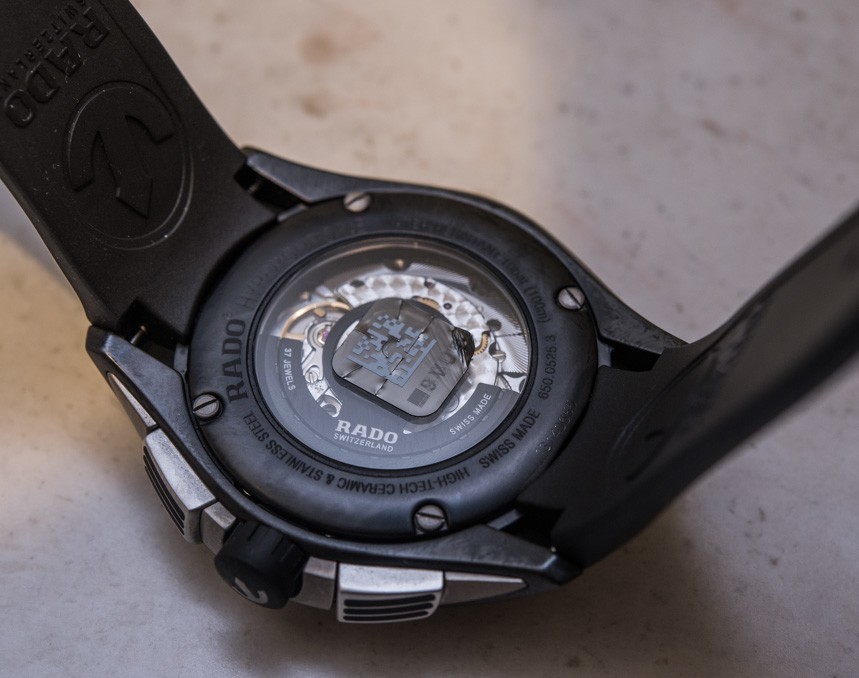
The movement inside (pardon the sticker on this showpiece) is an ETA 2894-2, finished with perlage and matched to the case with a black rotor. Running at 4 Hertz and providing 45 hours of power reserve, we are looking at the usual ETA performance matched with above-average levels of decoration. The movement ran smoothly and did not exhibit any winding noise or rotor vibration – issues I have more frequently experienced with watches equipped with the ETA 7750 – an overall performance that matches the restrained, sensible design of the Rado Hyperchrome XXL Court collection.
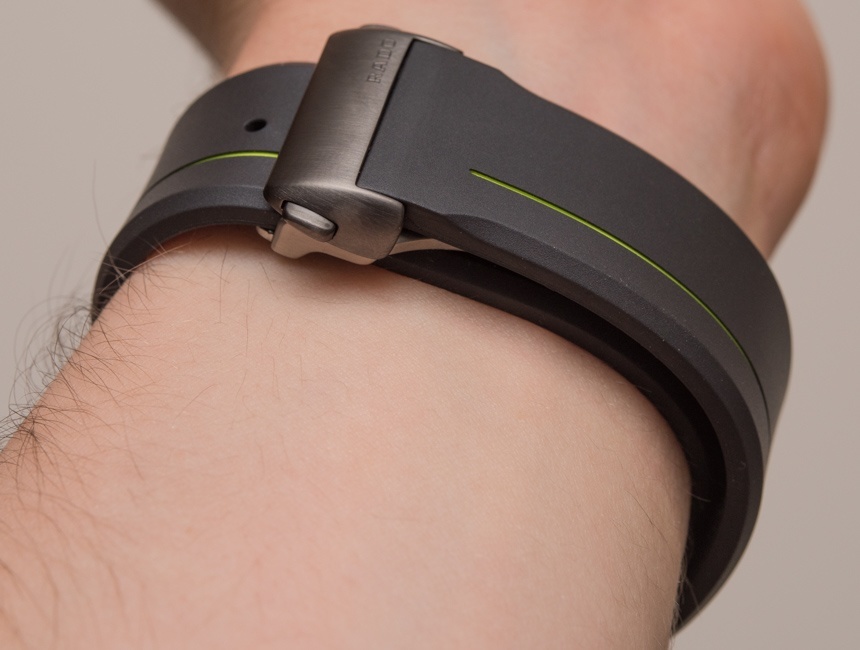
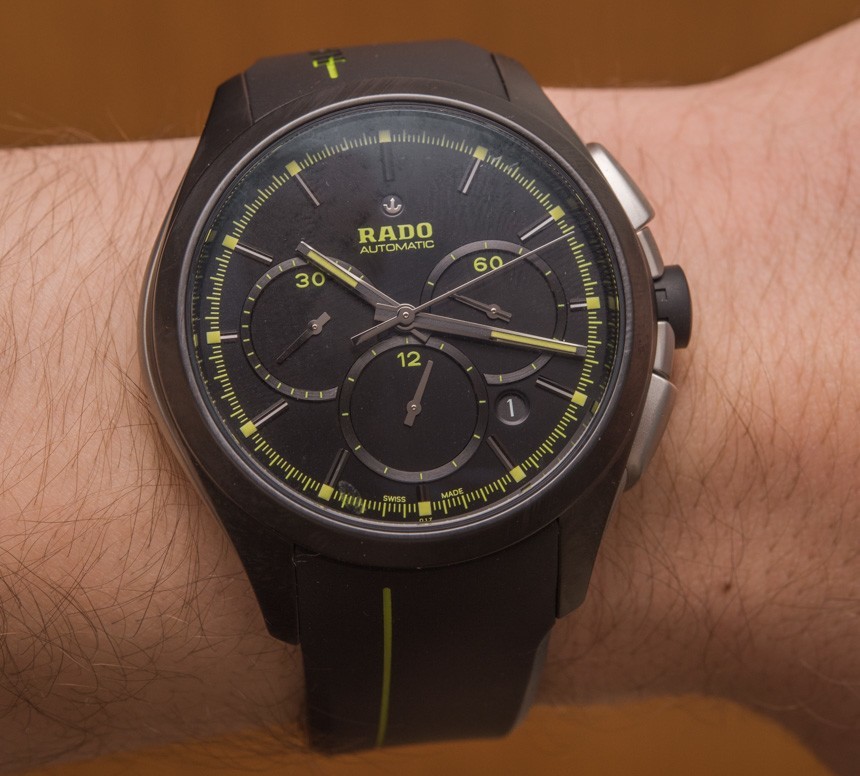
Of course, you do not have to love tennis to enjoy the Rado Hyperchrome XXL Court collection, but as a former fan (with a now renewed appetite for the sport!), I really liked how the yellowish green of the watch always reminded me of the color of a tennis ball – as though it was constantly asking me: “are we going to the tennis court yet?” Even at 45mm wide, I had no issues hitting the balls under the scorching Miami sun with the watch on, in fact, the strap held it firmly in place, never once bothering me. I particularly like the the design of the folding clasp, as the longer part of the strap runs underneath it, not allowing the metal to touch the skin: a very clever design that makes the watch not only more comfortable, but also wearable for those with skin sensitive to direct contact with metal.
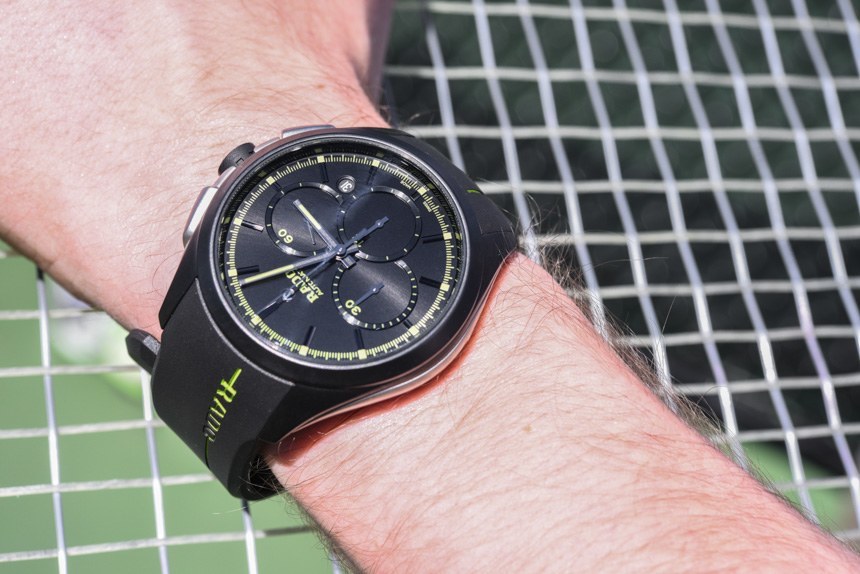
The Rado Hyperchrome XXL Court Collecion “Grass Court” is priced at $4,300 on the rubber strap and $4,600 with a ceramic bracelet. For that money, you get a beautifully integrated design – if that is your thing – comprising a case that is going to stand the tests of time remarkably well, a decorated movement with a no lesser reputation, and a rubber strap that is among the most comfortable, regardless the price point; although I’d be tempted to somehow get the watch with both the strap and the bracelet. rado.com

